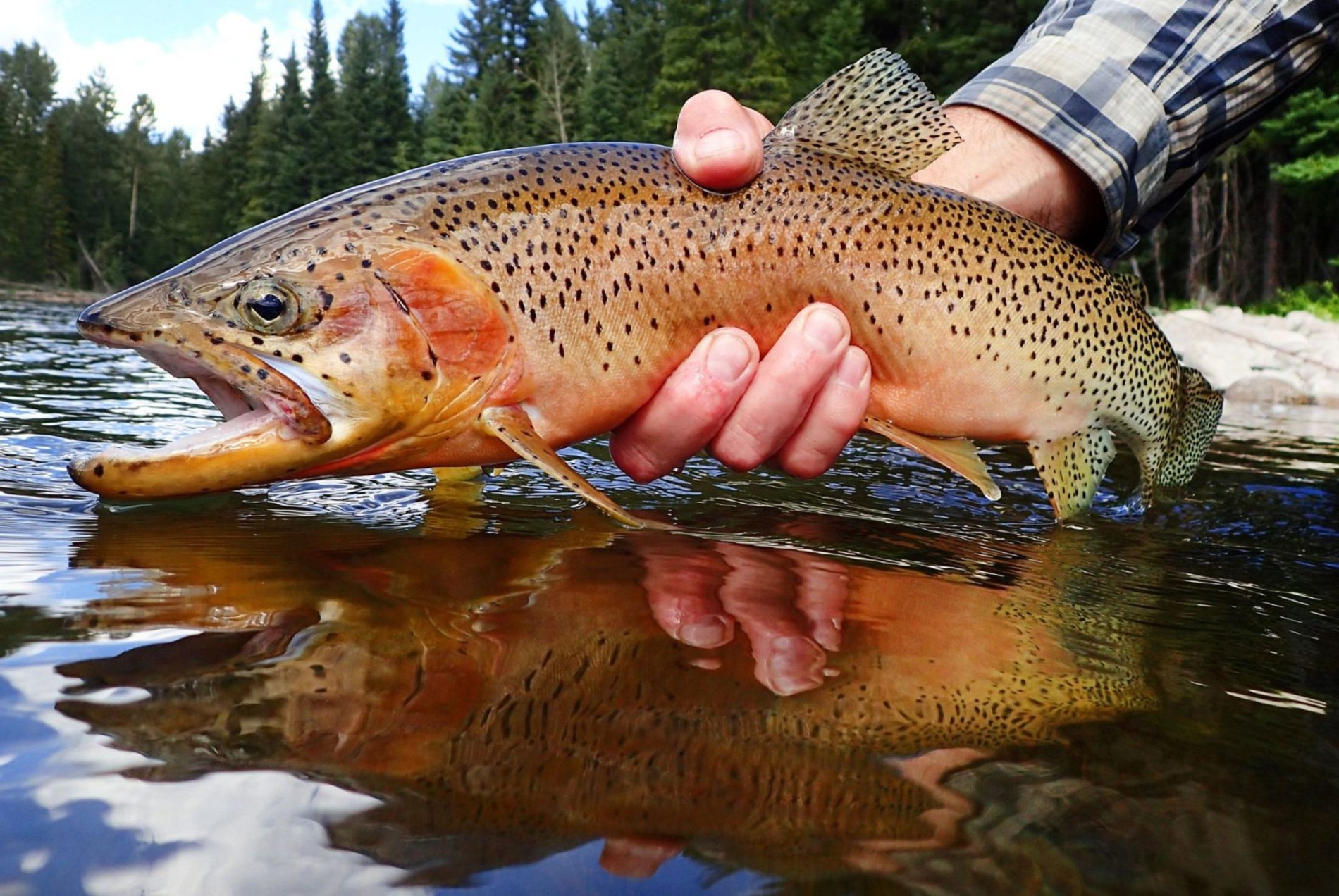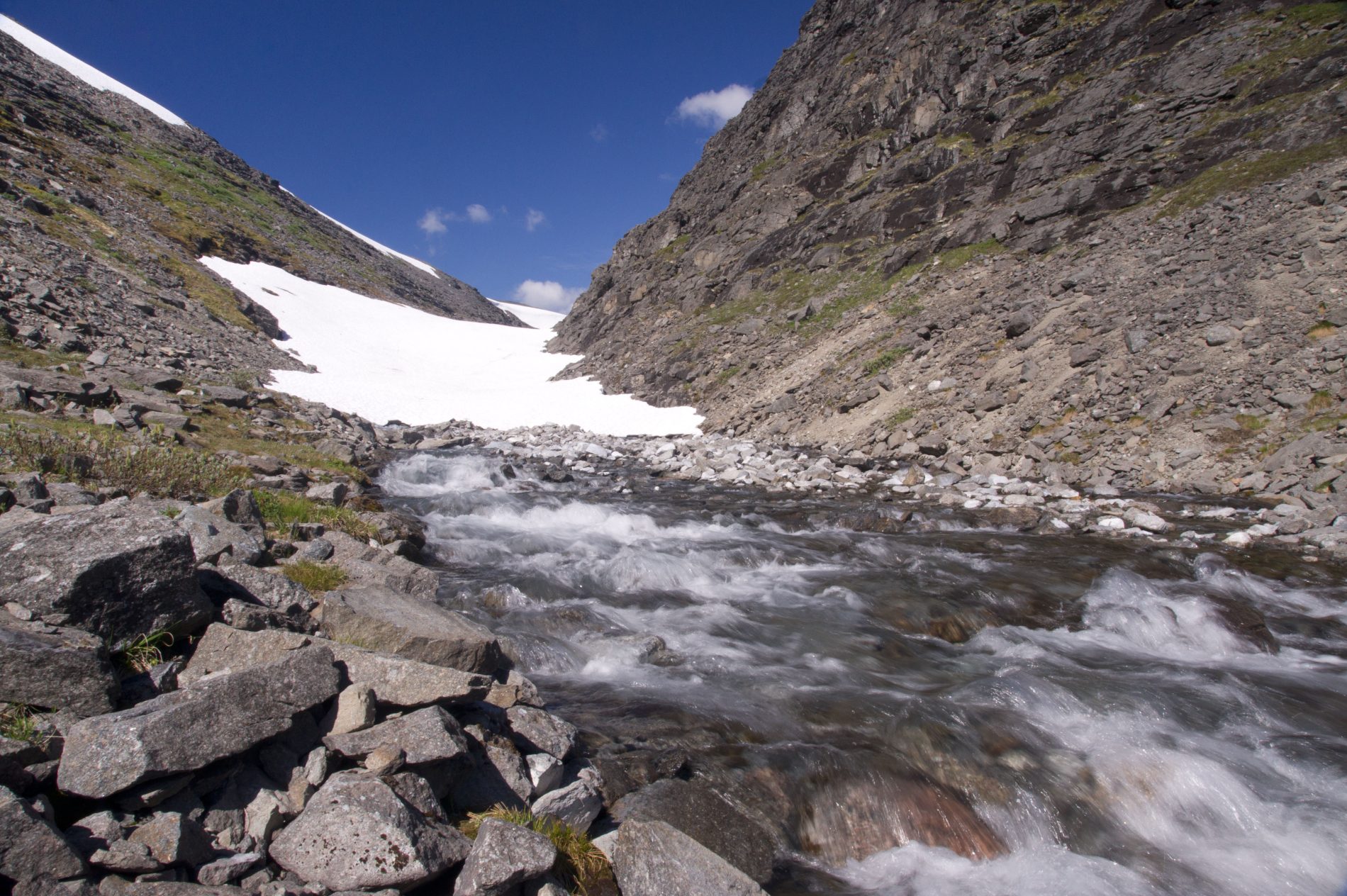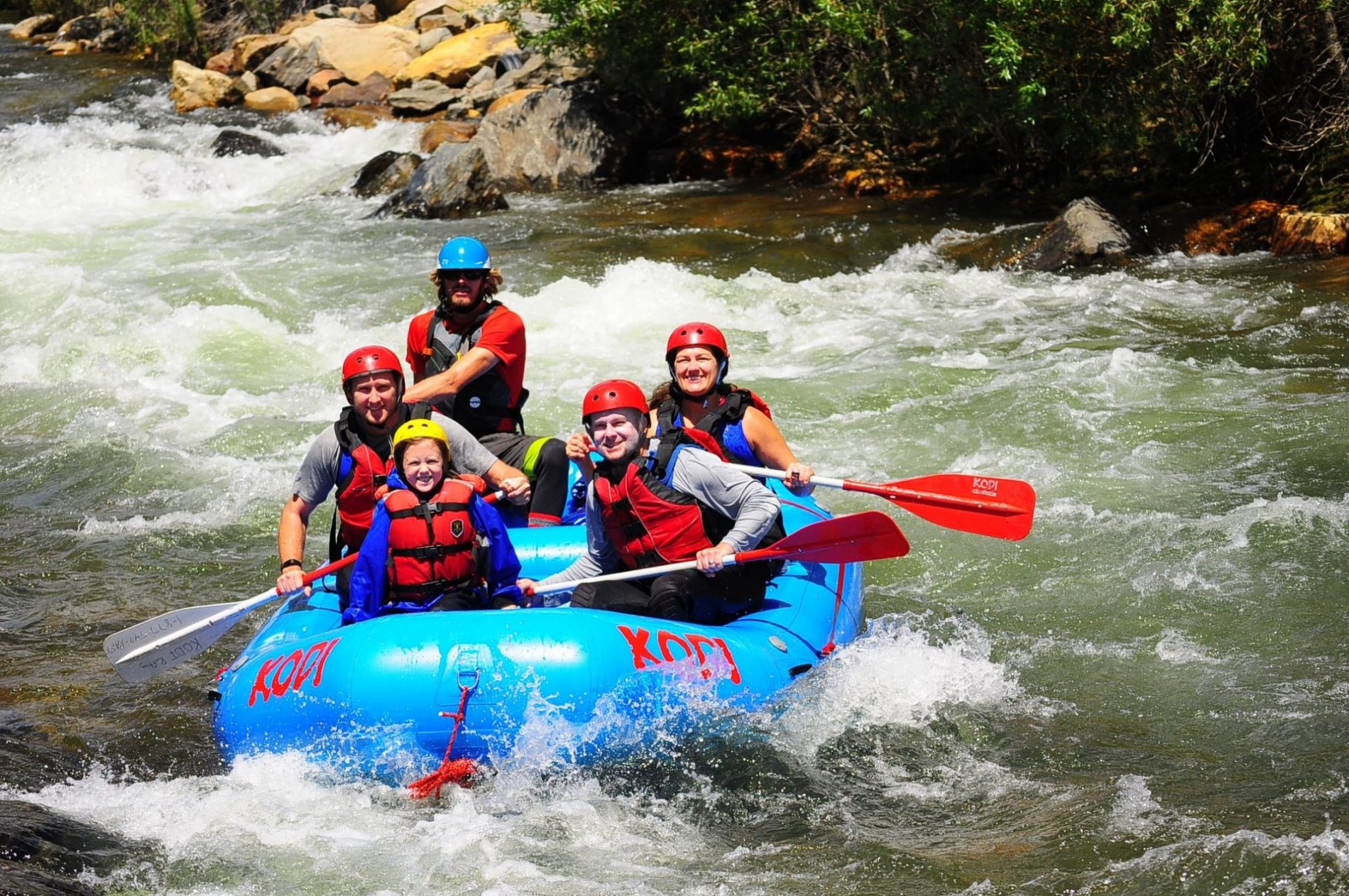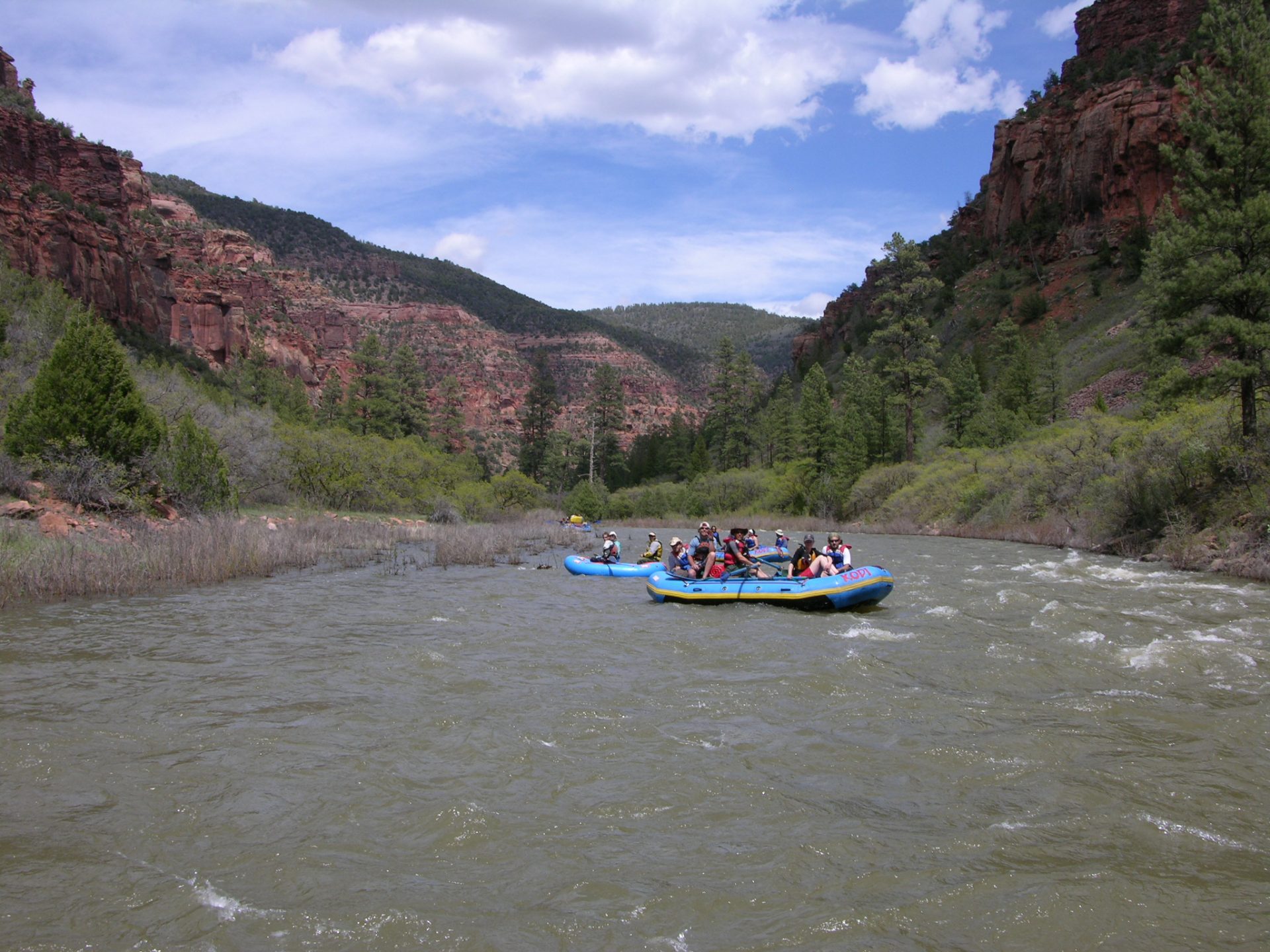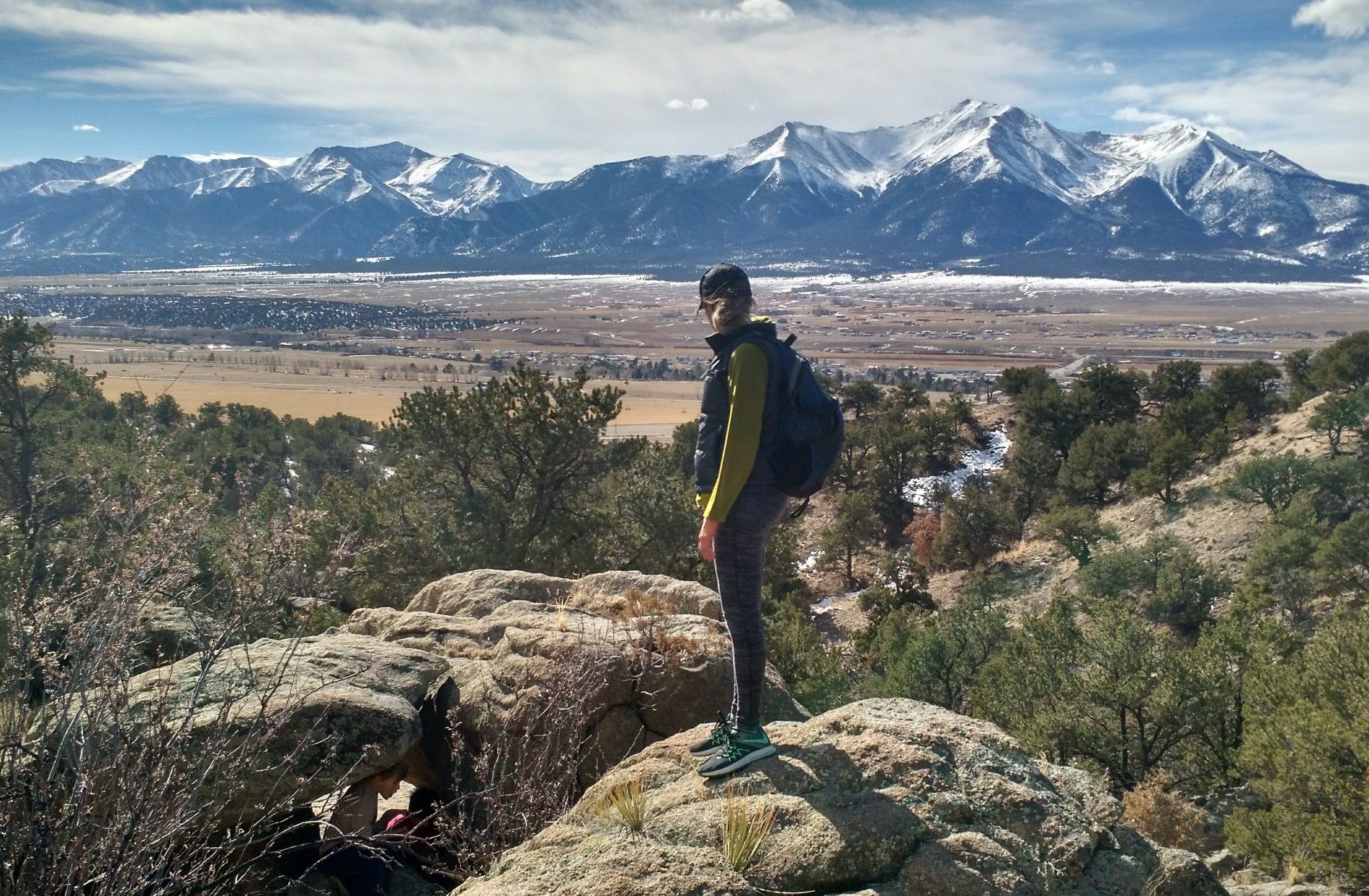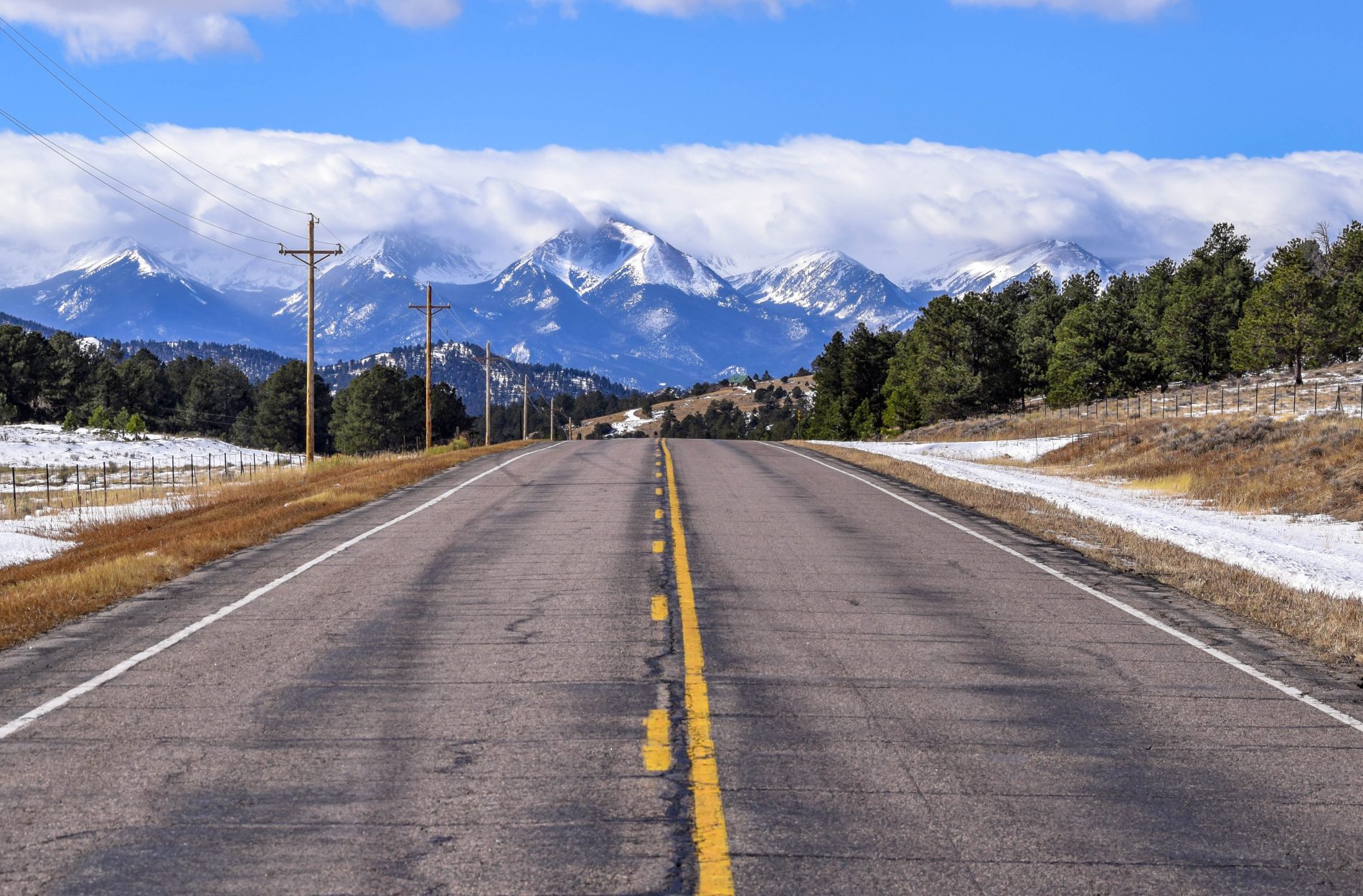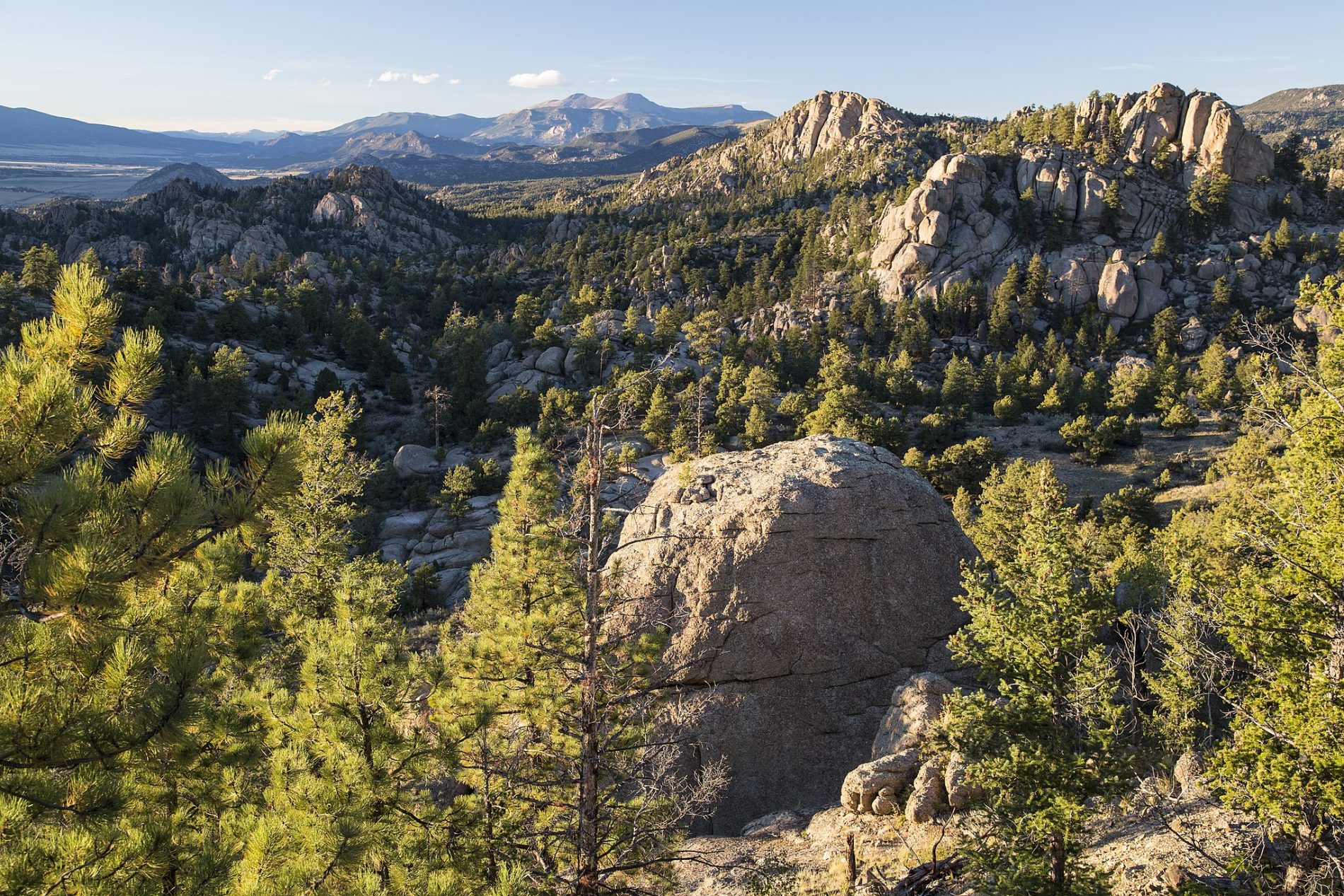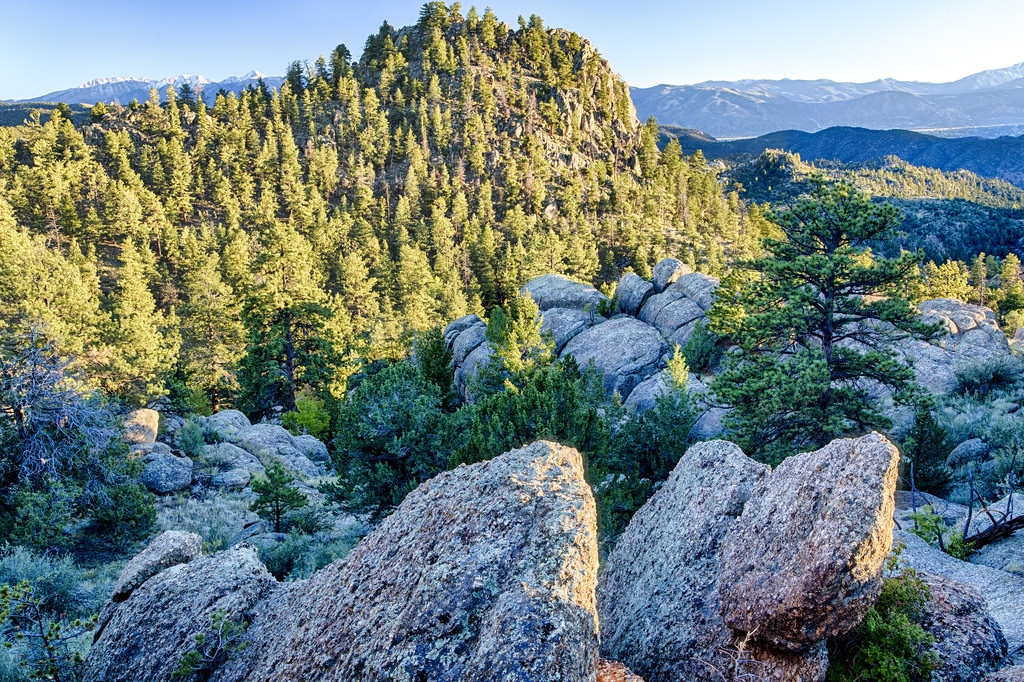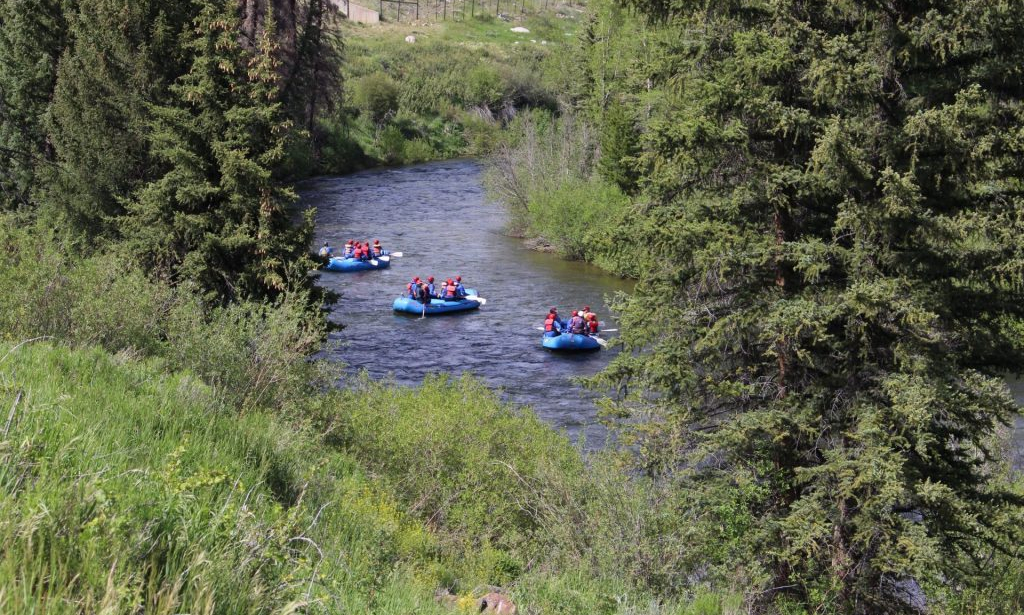Whitewater River Rafting or Animal Watching?
Stop and take a deep breath… Feel the wind and experience the sights of Colorado’s wild animals from the seat of a whitewater raft.
Whether you’re hiking trails or paddling the rapids of the Arkansas, Clear Creek, Blue, or Colorado rivers with Kodi, you’re guaranteed to see some wildlife! Colorado’s diversity of landscapes and vegetation is home to a wide variety of wildlife like the bighorn sheep, elks, golden eagles, and varieties of trout.
We want to provide a quick reminder to never feed or disturb any wildlife. For more information on the leave no trace ethos, check out our recent blog.
Fish in Colorado’s Rivers – Rafting
When you’re whitewater rafting the Numbers, Browns Canyon, or Pine Creek you may be lucky enough to see some fish. The main fish population in the Arkansas, Clear Creek, Blue, and Colorado rivers are brown and rainbow trout, but you’ll occasionally see some Brook Trout too. Another animal you’ll commonly spot in the rivers are Beavers! Beavers aren’t fish obviously, but there is a possibility you will see them and their amazingly clever dams.
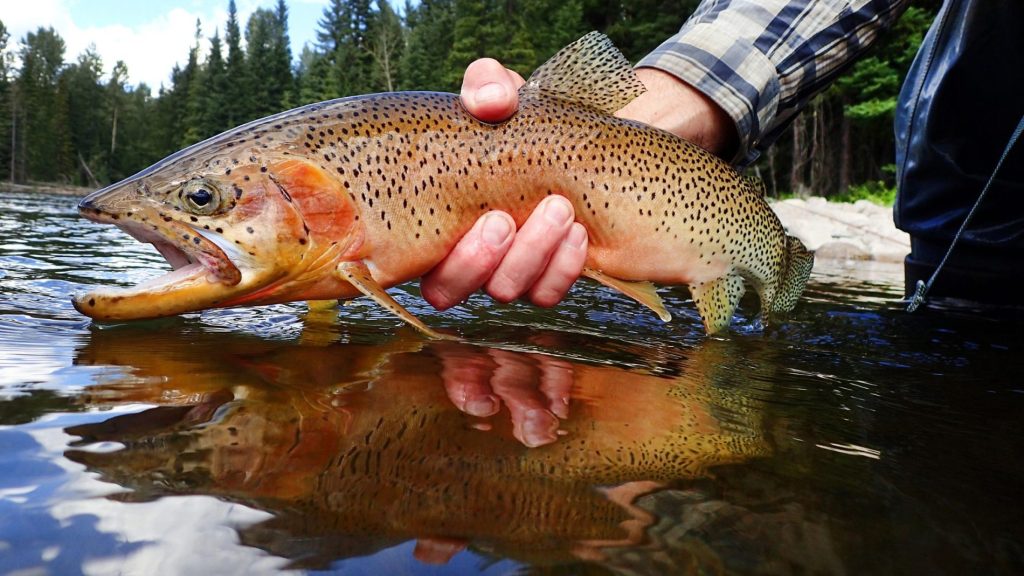
Did you know the Colorado native trout before the 1850s was the greenback cutthroat trout? The Arkansas river used to be teeming with greenback cutthroat trout, but sadly the mining runoff in Leadville killed this fish species in the valley of Buena Vista. You may be asking yourself, HOW? Greenback cutthroat trout died due to a heavy amount of metal contamination and soil erosion. However, Leadville National Fish Hatchery is working to resolve that since the greenback cutthroat trout are endangered, and it’s their main priority to repopulate the surrounding rivers and lakes.
A long-spoken legend between the senior whitewater river rafting guides is that Northern pike fish have been caught in the Arkansas River. Northern pike are high alpine lake fish that like deep and cold water, but sometimes they’re flushed out of the lakes and have been found in our rivers! There are no guarantees of seeing a pike, but the senior river guides swear by this tale.
Unfortunately, we don’t allow fishing from the rafts because of the other guests on your boat, but if you are looking to fish be sure to check out the requirements for your fishing license in Colorado and some rules and regulations you can reference to legally fish in Colorado.
Colorado’s Birds as Seen Overhead From the River
When rafting, it’s easy to forget to look up, but we highly encourage it! Here in Colorado, you will see great blue herons, bald and golden eagles, turkey vultures, and Corvus. Common birds you may spy are sparrows, robins, and swallows. The swallows are very prevalent when it is raining/drizzling. Did you know that birds predict the weather? When it’s raining, swallows fly low because they have very sensitive ears. When the barometric pressure drops, swallows will fly as close to the ground as possible because the air density is greatest the lower they go.
Another common bird you or guide will often spot are in the Corvus family, which includes ravens, crows, and magpies. You won’t miss these birds, as they are very noisy!
Some striking birds you have a possibility of seeing are the red-winged blackbird, blue jay, North American goldfinch, and steller’s jay. The steller’s jay looks like a metallic blue bird, and is super unusual and truly beautiful. Check out the photo below of a steller’s jay in the wild.
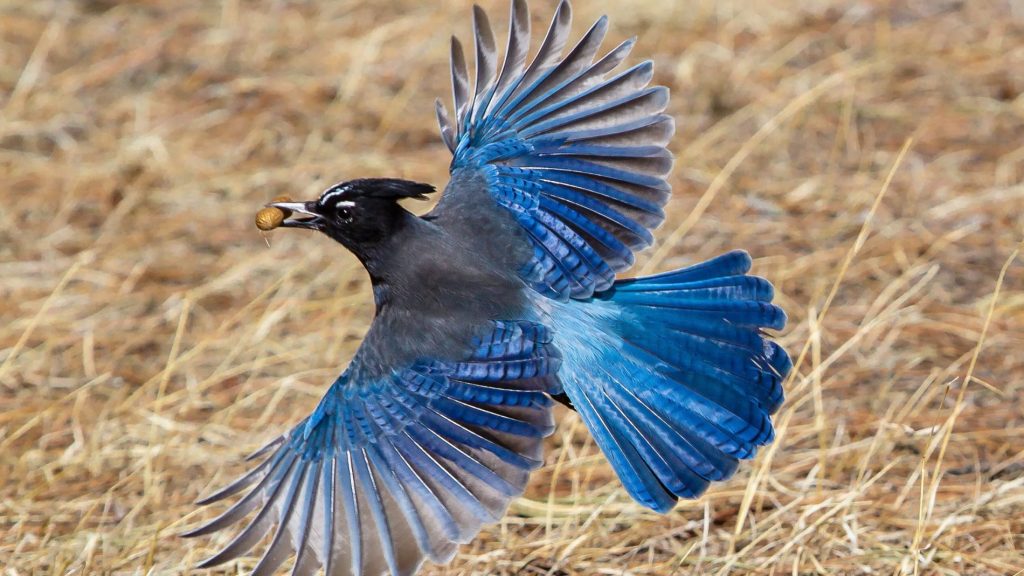
Some rare birds that are less likely to cross your path but you may be lucky enough to see are the western tanager, great blue herons, bald eagles, and golden eagles.
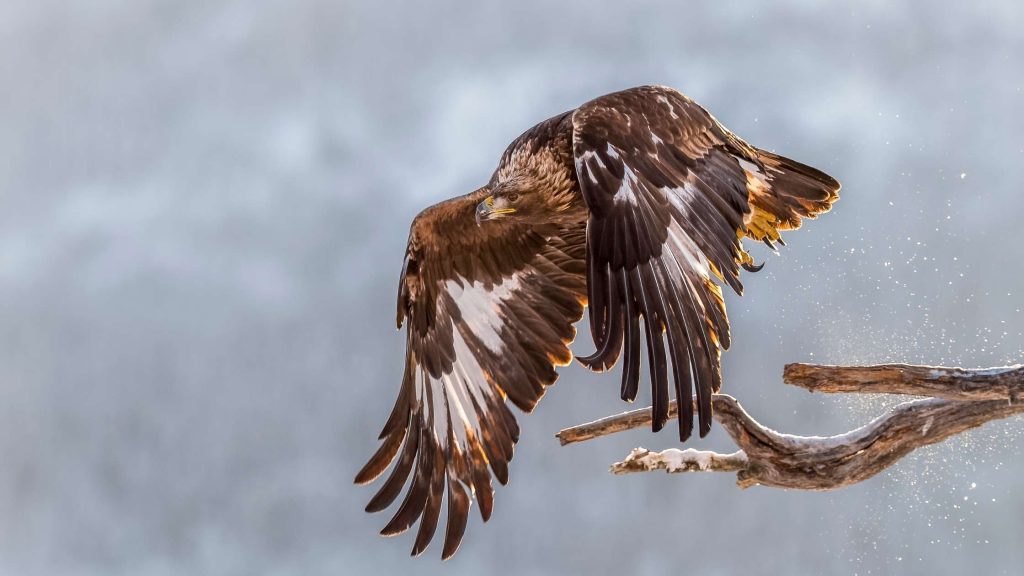
Birds we can almost guarantee you will see are peregrine falcons, turkey vultures, and good old Canada geese, as well as the occasional duck or two!
If you would like some more pictures of birds and wildlife animals in Colorado, be sure to check out FDRD, Friends of the Dillon Ranger District which also offers more information about our forests.
Colorado’s Land Animals in The White River National Forest
Colorado is the land of the wild for larger wild animals as well. Yes, there is a possibility you’ll come across black bear, elk, mountain lions, coyotes, red foxes, moose, bobcat, mule deer, white tail deer, porcupine, pikas, snowshoe hare, Rocky Mountain bighorn sheep, and mountain goats. Did you know that snowshoe hare’s beautiful coat changes colors with the season? In the wintertime, snowshoe hares are white to disappear into the snow and in the summer they turn a nice shade of brown to blend in with the forest floor and bushes. When whitewater river rating, our groups can get very loud and animals hate loud noises, so it’s less likely you’ll see any of the larger animals, but we definitely get a glimpse on occasion.
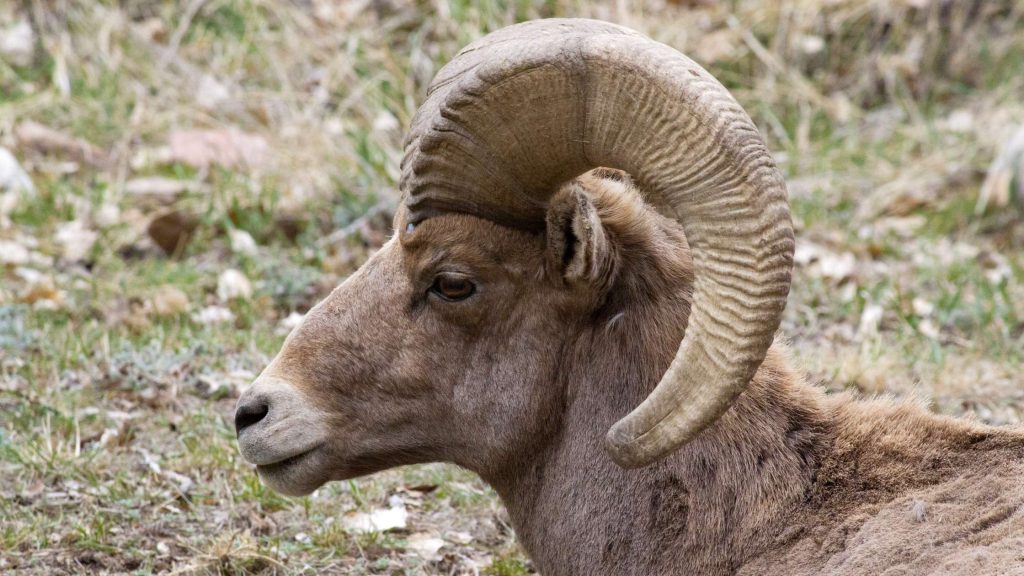
There are many Colorado marmots that you may see or just hear. The largest of the Colorado land squirrels is the yellow-bellied marmot. The yellow-bellied marmot hibernates throughout the winter, and when approached you will hear a loud warning whistle, which is very unique and earns these animals the nickname “whistle pigs.”
Recently, gray wolves were reintroduced into the Colorado mammal landscape. We have never seen any wolves on our rafting trips to date, but there have certainly been sightings of them throughout the plains and in the ranching communities. In the gray wolf reintroduction process through natural migration, one pack has already established itself in the North Park Mountain Valley near Walden, Colorado, but we have not seen any near the Upper Colorado River, the Arkansas River, or the Blue Rivers.
Ready to animal watch from a whitewater raft? Call and get signed up for your next Colorado adventure in Buena Vista, Breckenridge, Frisco, Idaho Springs, Kremmling, or Cortez Colorado through Kodi Rafting. If you have any questions about what raft trip will be best for you and your friends or family feel free to give us a call at 877-747-RAFT. We are always happy to answer all your questions and recommend the ideal trip for you!!
Colorado Winter Snow’s Impact on Spring Rafting
We’re in the heart of winter, but we can’t help but wonder how the upcoming rafting season will kick off this spring! After all, winter snowfall and snowpack in the winter have a direct correlation to how our rafting season plays out. Even in the winter months, we start to have a pretty decent idea of how rafting will be later in the year.

How does snowpack in the winter impact our rafting season?
Snowpack forms from a series of snow storms throughout the season. Snowfall essentially builds layers of preserved moisture to form in high altitudes and cold weather areas. In the winter, snow pack greatly impacts skiing, snowboarding, snowmobiling, backcountry touring, and avalanche conditions, but it’s important to remember that snow pack affects Colorado year round - not just in the winter. During the warmer days of summer, snow pack can affect all your outdoor activities, especially whitewater rafting.
To put it simply, Colorado’s snowpack acts like a drip irrigation system. As temperatures rise in the spring, snow melts slowly and steadily, first saturating the dry ground, then flowing into our rivers and streams, and filling up our reservoirs. When we get heavy winter snowfall, that snowpack is likely to produce higher-than-normal water runoff in the rivers and streams across Colorado.
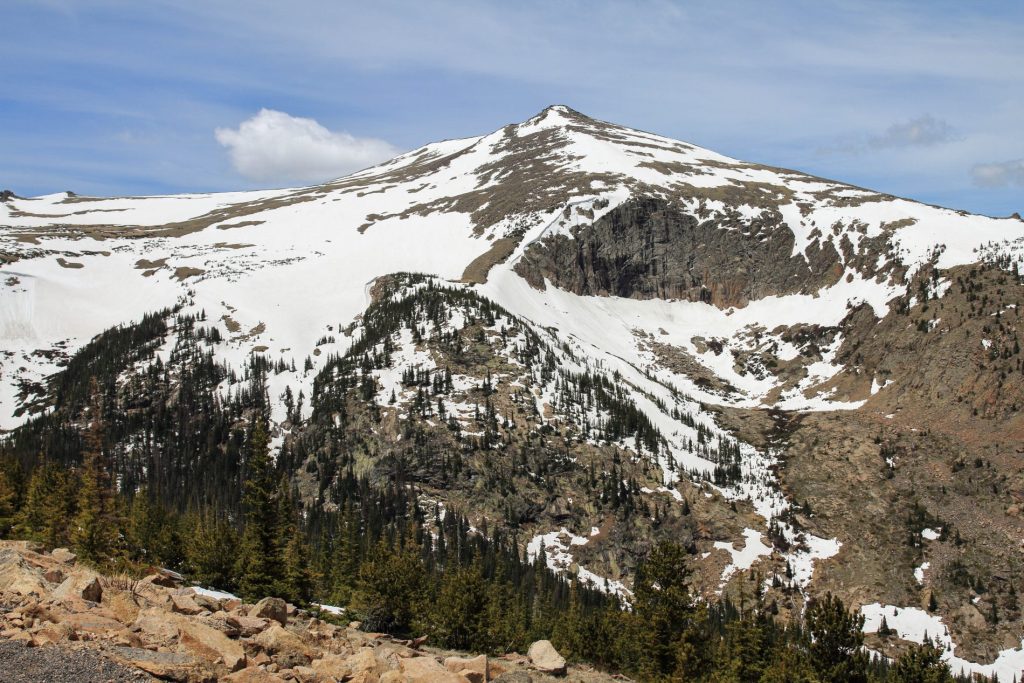
On the flip side, when Colorado experiences a winter drought without significant snowfall, rivers and stream levels drop and our rafting season may be shorter. Lower water means that our guests and raft guides will experience slower water along with lower water levels. For those of you excited about rafting in the Spring when water is likely to be higher, we encourage you to watch the timing if you want the most exciting whitewater of the season!
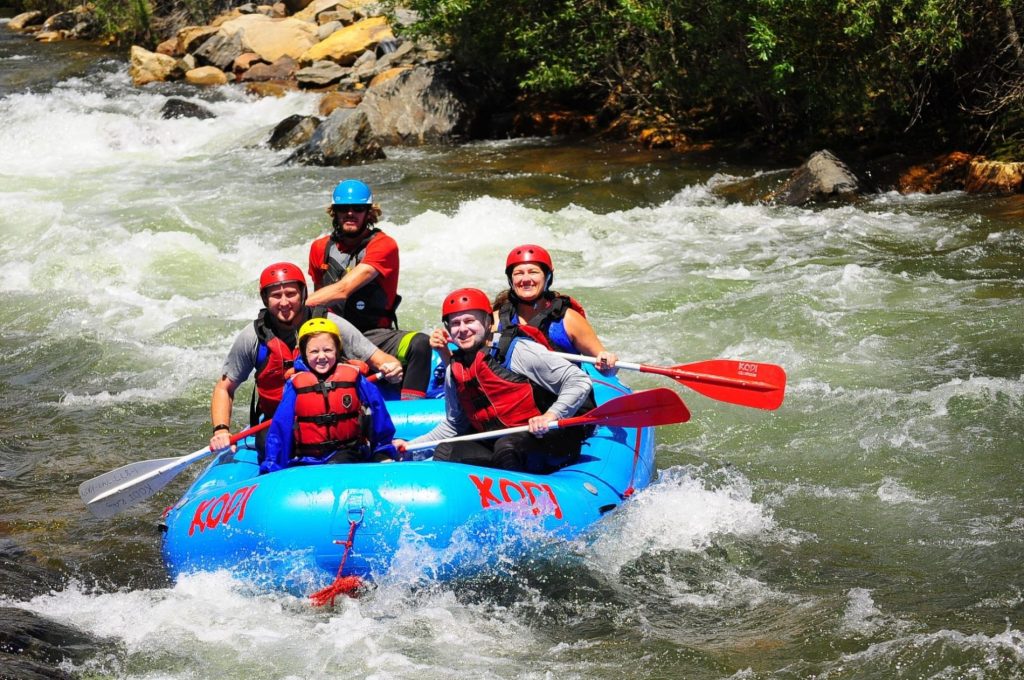
What are previous years showing us?
There is an impact we’re experiencing from our warming climate and ongoing drought. Climate change and warming temperatures can lead to faster snow melting. The trend of warmer climates over the years is concerning and is disrupting this system in numerous ways. Year after year, unusually dry soils from warmer temperatures and a lack of moisture has the earth absorbing more of the water from our snowpack. This means that less water is making it into rivers and streams, essentially limiting the efficiency of the melting snow. When temperatures rise earlier in the Spring and snow stops falling, the snow melts more quickly, and the land becomes drier in the late summer timeframe, impacting wildfire risk.
When researchers analyzed years of snowpack data across the western half of North America, especially in Colorado, they found that snow has been melting earlier in the year than it did in the mid- to late-20th century. If snowmelt begins to dry up earlier in the season, there is less runoff to flow through the ground during the summer months. Unless precipitation increases through rain in warmer weather, there will be fewer overall water resources for us all.
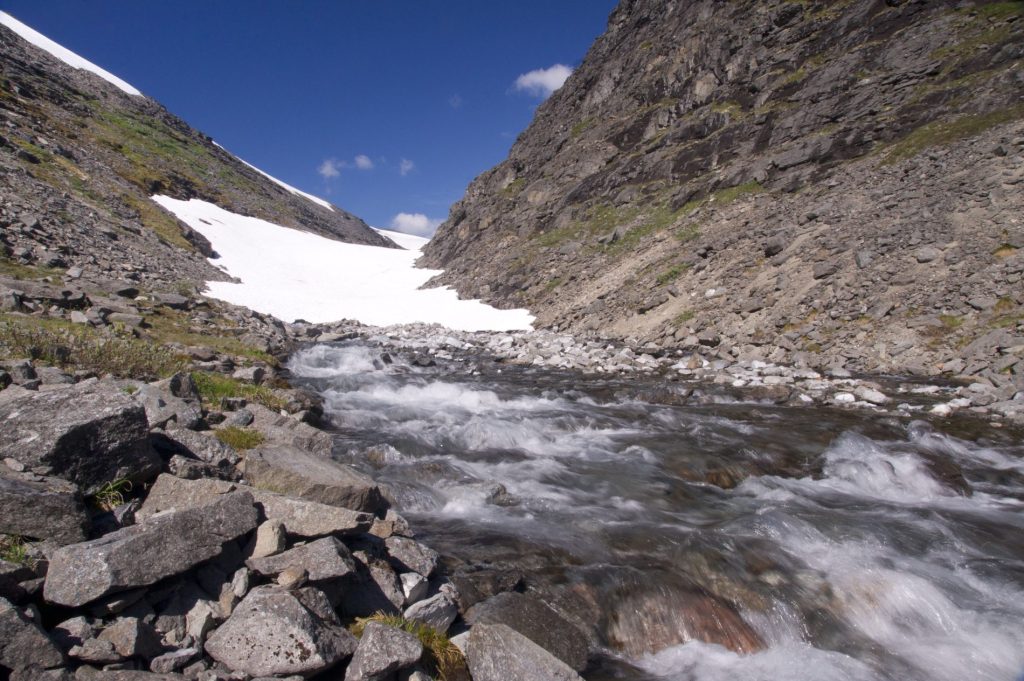
Colorado experiences many different seasonal changes throughout the year and we can even see weather change dramatically over the course of a single day. Our hope is always for more snow throughout our winters which in turn produces better rafting conditions for our whitewater raft guides and guests. High water is measured through stream gauge river sensors recording streamflow in cfs, which stands for cubic feet per second. In other words, river cfs is the amount of water flowing past the sensor at any given point in time. The more water rushing past the sensors indicates the whitewater volume moves at a very swift and fun pace.
Whether we have a long season of high water or lower river flows, we can’t wait to see you on the rivers this season. It’s not too early to start planning your trip with Kodi Rafting. Choose your river trip here and contact us today for information and reservations online or give us a call at 970-668-1548, so we can help guide your plan for experiencing the rivers of Colorado!
The Majestic Arkansas River
We’re so lucky to call Colorado home not only for the endless beauty, but because we get to raft one of the longest and most magnificent rivers in the country - the beautiful Arkansas River. The Arkansas River runs through Colorado, Kansas, Oklahoma, and Arkansas, with the river’s source starting in our state of Colorado near Leadville, and dumping out into the Gulf of Mexico. The Arkansas River is a major tributary of the Mississippi River and is the sixth-longest river in the United States, making it one of America’s most popular rivers for adventure seekers and water enthusiasts alike. The Arkansas River runs as a steep, fast-flowing mountain river through the Rocky Mountains in it’s narrow valley dropping 4,600 feet in 120 miles- making it perfect for whitewater rafting.
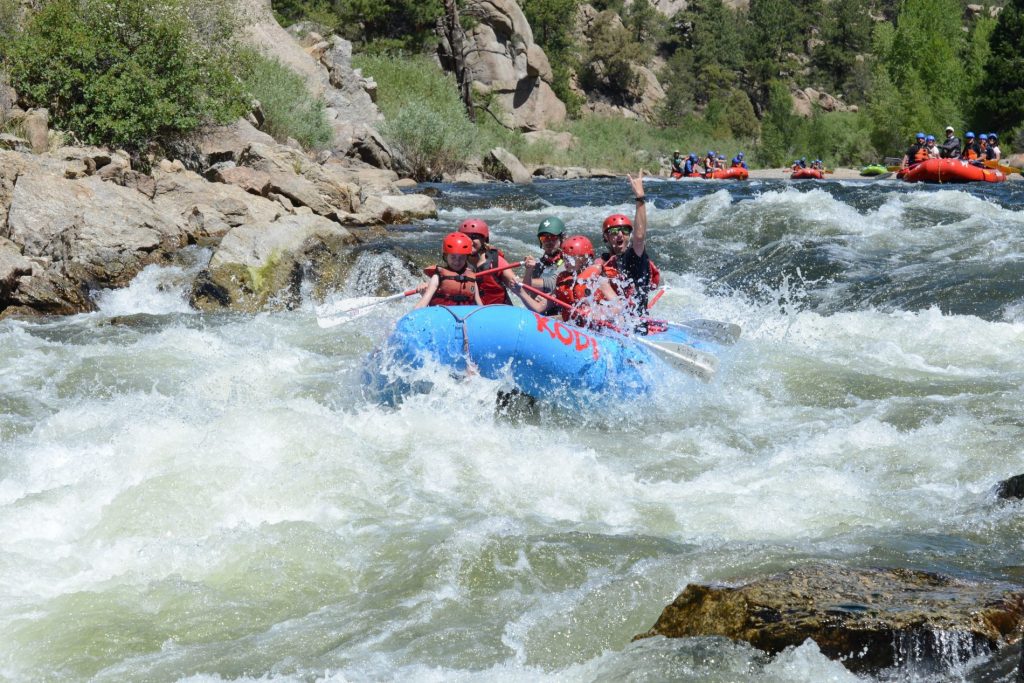
So, what’s the major significance of this particular river? Millions of years ago, the Rocky Mountains formed the Sawatch Mountain Range and over time, rain and snow runoff from these mountains sculpted the rocks creating jagged peaks and sweeping valleys. This shaped the landscape all the way from the Colorado mountains to where it flows into the Mississippi River in Arkansas.
Once it was formed long ago, the Arkansas River played an important role in western population expansion. From 1819 to 1846, the Arkansas River was the official border between Spanish Mexico and the United States. It was only after the Mexican-American war that the Arkansas River was said to lie within the boundaries of the United States. There was also a brief gold rush along the river which attracted thousands of early explorers to look for gold in its waters, but it wasn’t long before the gold was exhausted and gold seekers moved on elsewhere.
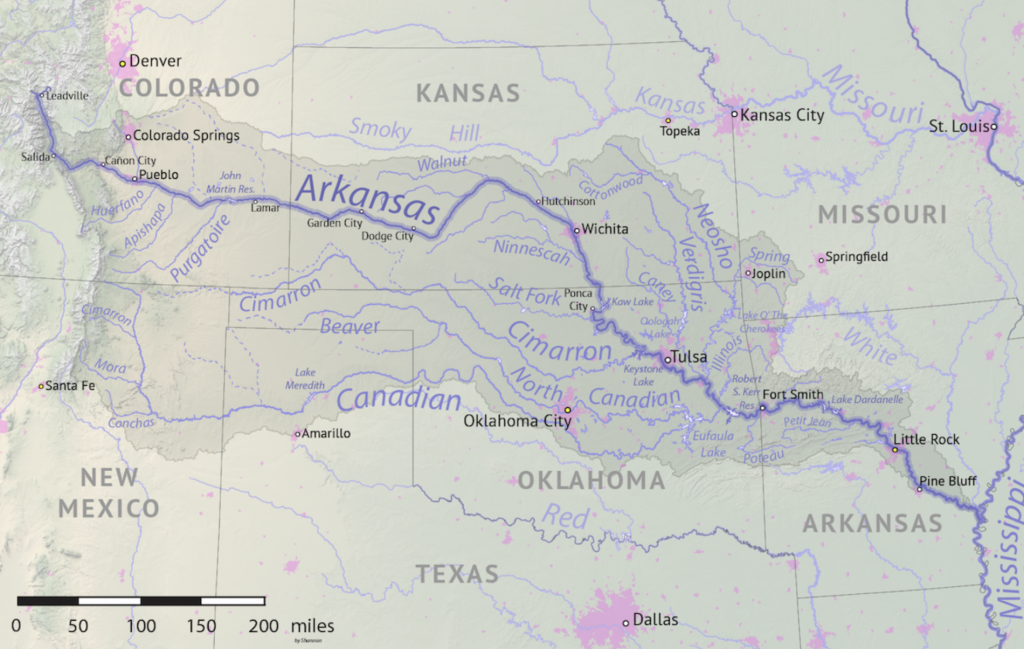
While irrigation is still significant along the Arkansas River in eastern Colorado and western Kansas, water management has helped to keep the river flowing throughout the year. Managing the water levels enables white water rafting groups to enjoy this river responsibly during summer months. The Ark, as locals call it, gains momentum as it flows past some of the biggest mountains in Colorado, benefiting from their abundant snowmelt in the spring and summer and the tributaries that feed it. Water levels vary depending on the amount of snow and precipitation we receive each winter season which melts from the many mountains surrounding the river. Just imagine how much water comes down from some of our tallest peaks that are 14,000 ft tall! After snowmelt has run out, get it while the gettin’ is good because the Arkansas' raftable flows only happen during a specific time of the year, with that flow slowing by mid-August. Basically, Clear Creek Reservoir, which is 3-4 miles downstream of Granite pumps water into the Arkansas so that the water levels don’t go below a certain raftable level during our high peak summer months.
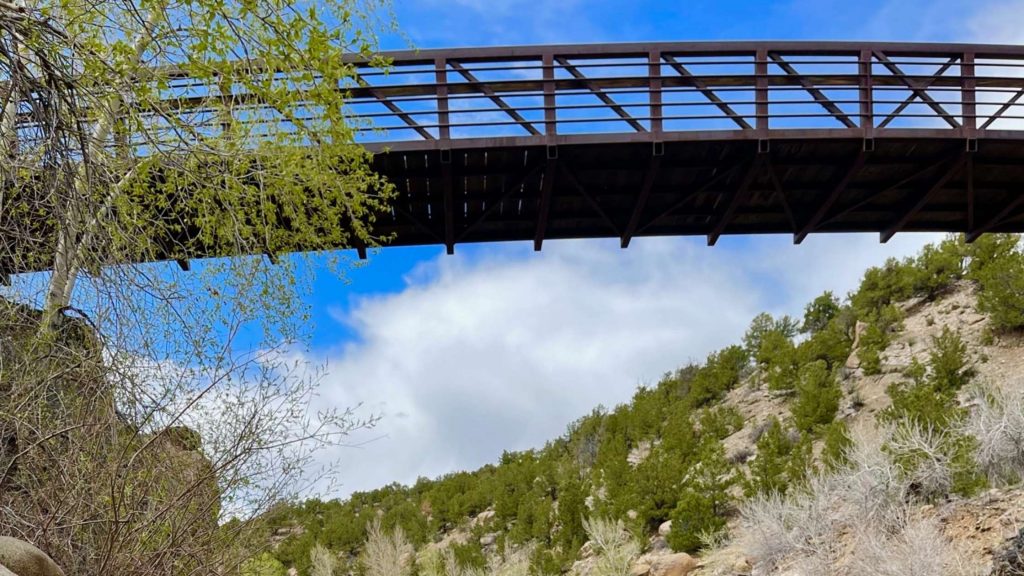
KODI Rafting’s Arkansas River raft trips range from mild, scenic floats to world famous class III to class IV whitewater. Our most popular Arkansas River trips take guests through the gorgeous Browns Canyon National Monument or through the raging rapids of the Numbers north of Buena Vista. The Arkansas River is ideal for families with young children, groups with mixed skill levels, and adventurous teens and adults. Choose your river trip here and contact us today for information and reservations online or give us a call at 970-668-1548, so we can help guide your plan for experiencing the waters of the Arkansas River!
It's Time to Get Outside with Kodi Rafting
As the world starts slowly opening back up again, we recognize that there’s no playbook for living through a pandemic, or even getting your life back to ‘normal’, so we’ve created one for you so you’re able to kick start living your best life in the great outdoors of Colorado!
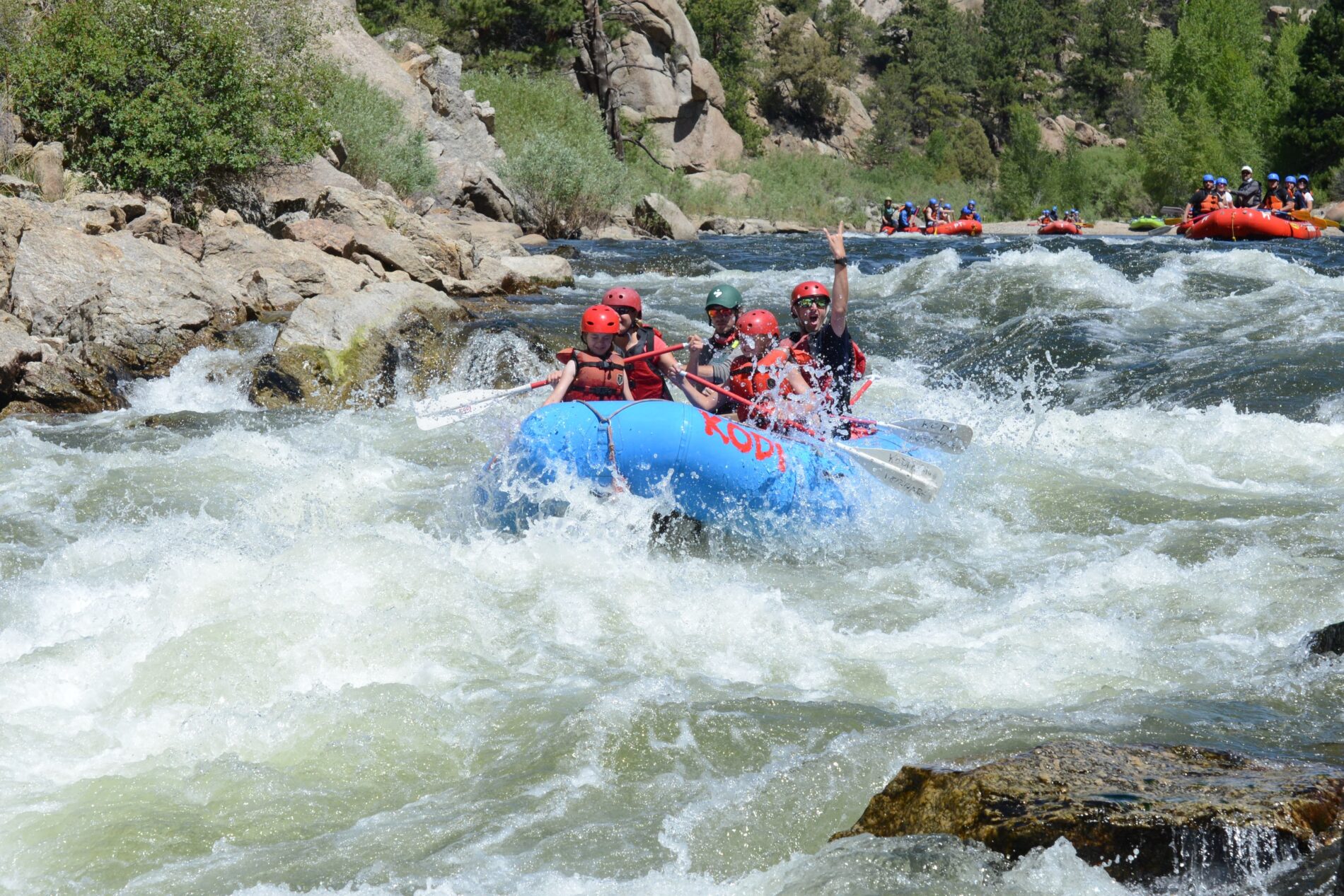
During uncertain times over the past year, the idea of cultivating personal happiness might seem trivial, but it might be more important now than ever before. There’s unwavering evidence that positive moods can boost our immune system and can protect us from respiratory viruses, so it’s not something to feel guilty about, it’s a smart strategy just like washing our hands! But can you actually boost happiness during the down-turn of a global pandemic? It’s certainly not as simple as washing one’s hands – but there are actions we can take to manifest joy, like being outside in nature. We might even say the best way to manifest joy is by being out on the river! It’s proven that exposure to nature has been linked with better general health, less stress, and increased happiness. What better way to reconnect with family and close friends while enjoying the outdoors than taking a rafting trip down the pristine waters of Colorado on a beautiful blue sky day? We say, it’s time to get outside with the Kodi Rafting family for some well-deserved fresh air on Colorado’s favorite whitewater adventure experience!
While we’re so excited to get back out on the white water, we’d like you to know we’ve taken some extra precautions for our daily operations to put you at ease and that we are doing everything we can to ensure the health and safety of you, our guests, and our staff. First, Kodi takes your health and safety extremely seriously. From fully wiping down our boats, to our touchless check-in, and sanitizing gear after each use, our goal is to support your craving for adventures, safely. We even invested in new gear this season to be sure each item is top of the line. We also are proud to say that Kodi had no COVID infections last year as we have taken the CDC guidelines very seriously. By being safe and taking preventive measures, we are welcoming the upcoming rafting season with open arms and we are looking forward to a summer filled with fun and we hope you will join us.
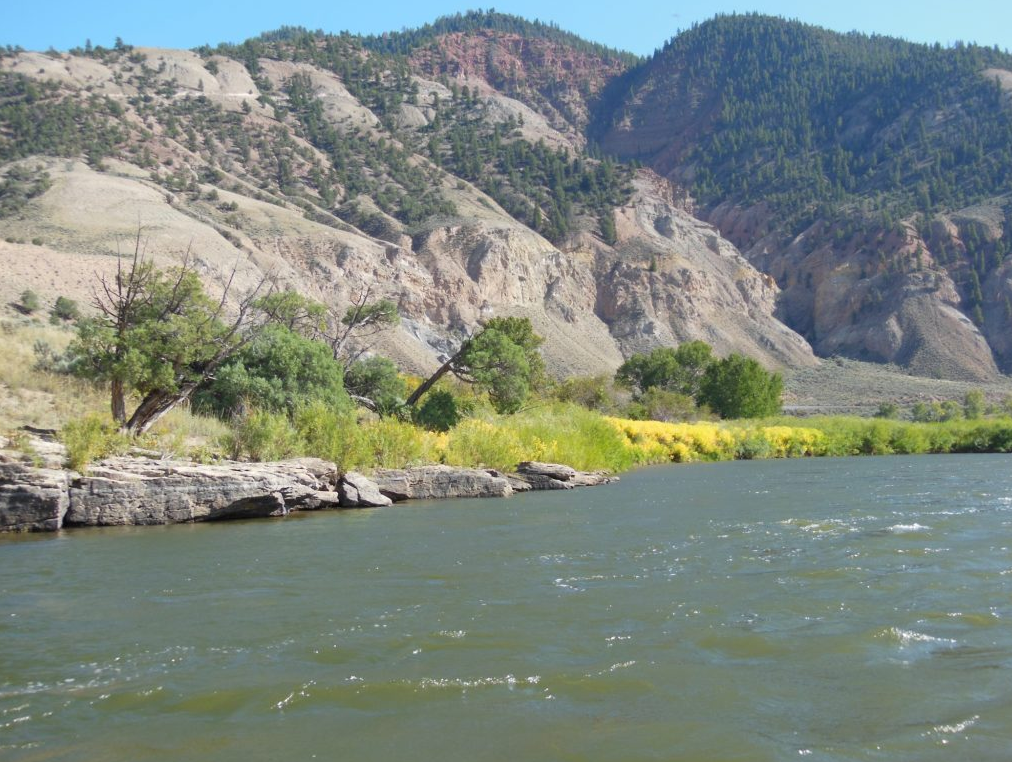
Our focus has and will always be on the safety during your raft trip. As we move forward and our country begins to heal, we encourage you to join us for a trip of a lifetime! There’s no better way to reconnect with friends and family, and get rid of your ‘FOMO’ of activities than spending an afternoon on the river. This summer is going to be an awesome fun filled and exciting time to get back to feeling more you, more free. It’s time to get back to living your best life!
Once you book your trip on the Upper Colorado, the Arkansas River through Browns Canyon, or Clear Creek with us, keep in mind it’s still wise to adopt some of these habits:
-Keep a mask handy. Be prepared to cover your face on the bus or van ride.
-Let us know if you would like to reserve your own boat, keeping your group to just your travel companions. We totally understand that you may prefer to maintain additional social distancing measures, and we will do our best to accommodate you to the best of our ability, so long as it does not compromise your safety on the river! If you arrive with 4 friends or more you’ll automatically get your own boat, so definitely plan to bring your friends!
-Wash your hands and be respectful of those around you so everyone can enjoy and have a great time.
– If you’re sick, please stay home.
– Check out our page on What to Expect for your day of rafting.
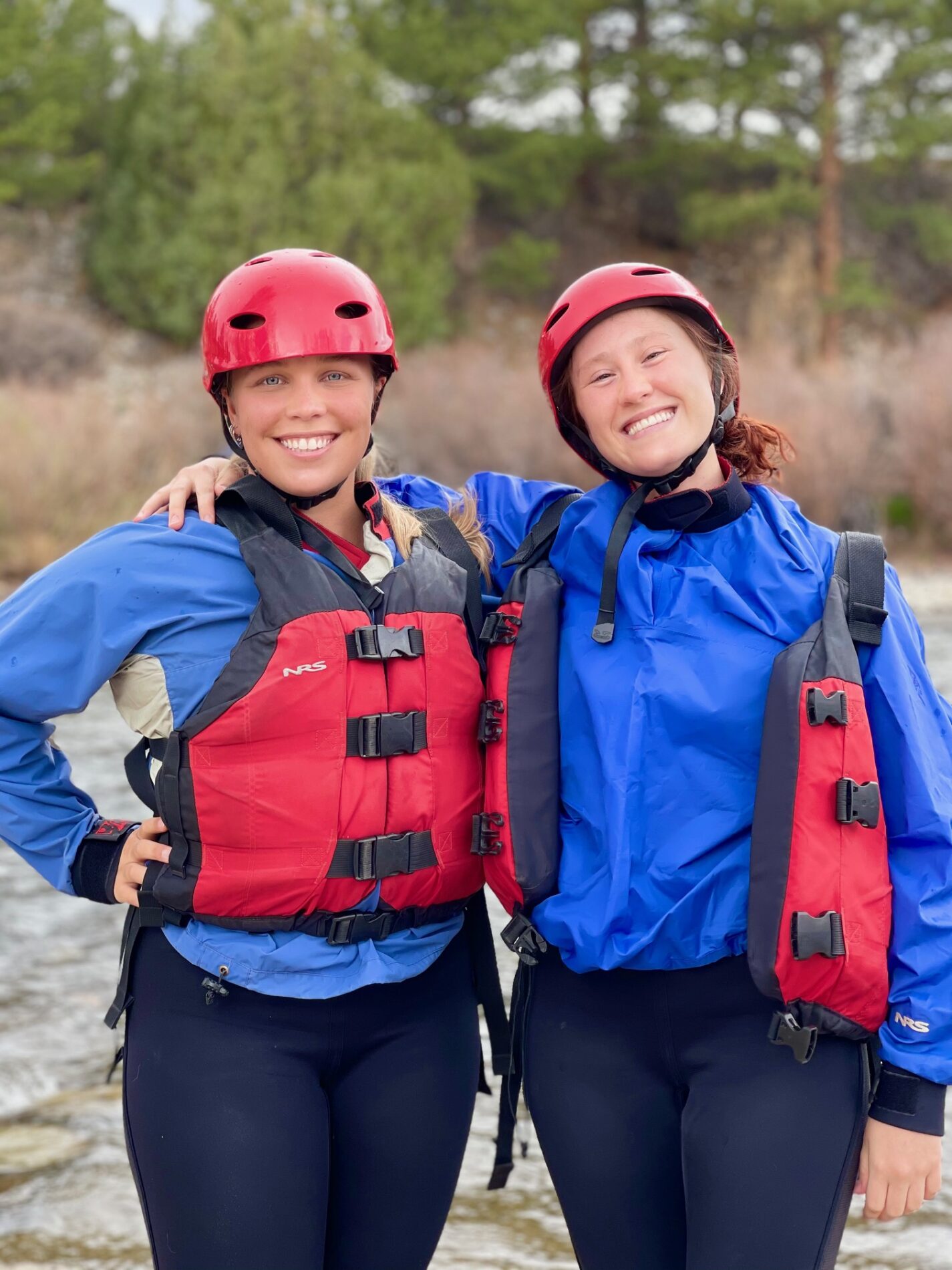
With most cafes and restaurants starting to open up, feel free to grab lunch in town and bring it over to Kodi’s picnic tables to enjoy by the river. Whether you want to arrive early and enjoy your lunch before your rafting adventure, or save it for after, you and your group are more than welcome to refuel at our picnic tables we have set up outside!
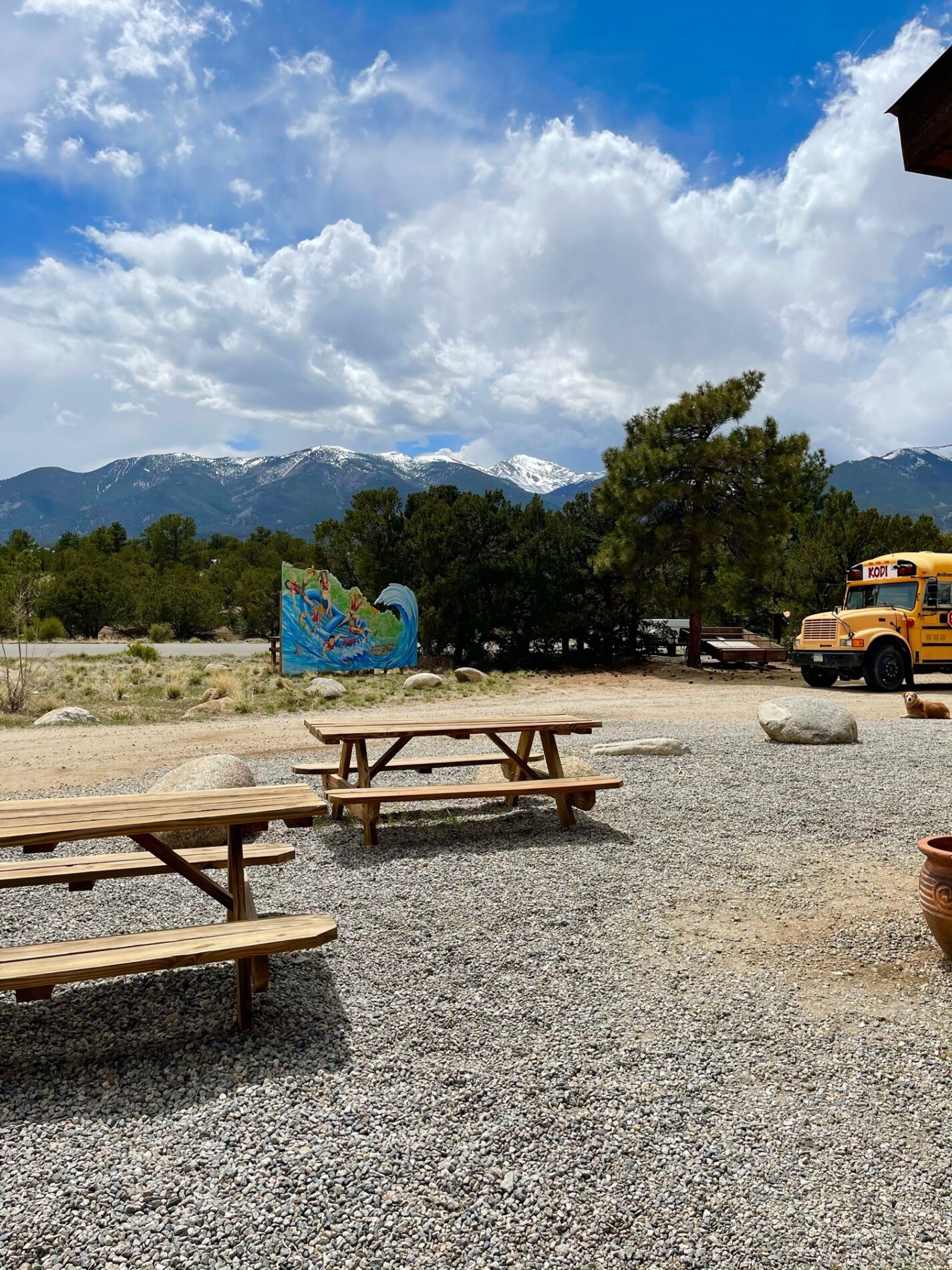
We’re so excited as this rafting season begins, and can’t wait to see you on the river! Choose your river trip here and contact us today for information and reservations here online or call us at 970-668-1548, so we can help plan the highlight of your vacation! You deserve this time outdoors to really connect with nature and enjoy the beautiful scenery of the Colorado river basins. You’ll discover the beauty of Colorado by raft, and truly understand why KODI Rafting has such a high number of repeat and happy customers that keep coming back to join us on the river for more fun year after year and leave us awesome reviews on Trip Advisor!
Classifications of Rapids for Whitewater Rafting in Colorado
Our whitewater rafting guests often ask us questions about river water depth, the kind of rapids they’ll be rafting through, and what the whole class system means as they prepare for their first or even 50th rafting adventure with us. So we thought we’d bring some clarity to the question and give you an overview of rapids classifications for whitewater river rafting … and provide some expertise on the topic.
Factors in Rapids Classifications
Rapids and the classifications of whitewater vary due to different circumstances: water levels can be high or low depending on the amount of snowmelt and vary as weather conditions change. Our beautiful snowcapped Rocky Mountain peaks melt and flow into Colorado streams, rivers, and reservoirs starting in earnest in May, which is the start of the spring runoff. The start of rafting season usually kicks off in the middle of May as the weather warms up, and tends to max out the highest water flow throughout Colorado depending on altitude and distance from the deepest snow pack. In general, spring snowmelt brings higher water and higher levels of difficulty while running our rivers primarily because the water runs fast and furious, forcing quick decisions as river features change. Water levels fluctuate dramatically throughout the summer and our guides can even see differing conditions between a morning run and an afternoon trip when water levels are in a high state of flux.
What are Rapids Classifications?
Rapids themselves are graded on a class system starting at 1 and progressing to 6. The higher up the scale they go, the more difficult and the more consequential the stretch of water will be. As an example, there are many variables that can change, either upgrading or downgrading the classification of a rapid. Rapid variables include water levels, objects, under
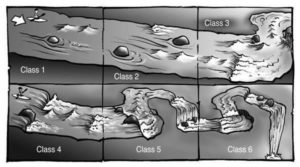
cut rocks, and strainers (like a log jam). Certain features within a river naturally are more difficult and make it more challenging to navigate. For example, Brown’s Canyon is less difficult to navigate than the Numbers section of the Arkansas River. This is why it’s so great to have an experienced raft guide to help you experience Colorado’s most beautiful areas safely. This, as well as having a great day of fun on the water, is what you experience when rafting with Kodi Rafting. Let’s explore the difference between each classification of whitewater in even more detail than is outlined on our website’s rapids classification page.
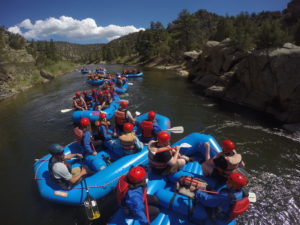
Class I is flat, easy moving current. Minimal moves, minimal difficulty. The most difficulty you experience on this level of river is navigating around bends and avoiding shallows, perhaps pulling into eddies. Think of this as a leisurely float down a river. Class I is about staying with the current and literally going with the flow.
Class II is moving current with slightly more difficulty and has specific moves that your raft guide needs to make in order to navigate the river efficiently. The difference between class I and II is the necessity to maneuver around objects or shallow sections. Class II is a moderate river trip and great for families. A bit more adventure and splashing without high anxiety. Join Kodi for class II trips on the Upper Colorado, Blue River, or Clear Creek for 1/2 day or full day trips.
Class III is a moderately difficult section of river, with slightly higher consequences, and with more difficult moves to be made by your raft guide. There is typically faster moving current than class I and class II, and there can be objects and things to avoid along your path. Some of these potential objects could impede your raft, or even flip you over if not navigated 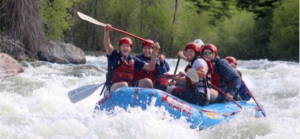 around properly. Class II, & III trips are your typical family trips with somewhat older or more adventurous family members. If you’d like to experience a higher level of family excitement, book our Arkansas 1/2 day or full day trip with Kodi at our Buena Vista location, or the Clear Creek Canyon trip departing from Idaho Springs to enjoy class III rapids.
around properly. Class II, & III trips are your typical family trips with somewhat older or more adventurous family members. If you’d like to experience a higher level of family excitement, book our Arkansas 1/2 day or full day trip with Kodi at our Buena Vista location, or the Clear Creek Canyon trip departing from Idaho Springs to enjoy class III rapids.
Class IV is a difficult stretch of river. A class IV section has fun, fast and technical rapids. Standing waves, big rocks, turbulent water, and difficult features are all things you will find on Class IV river runs. These rapids are active: multiple objects, multiple variables and multiple moves involved in order to navigate safely. The Numbers of the Arkansas River, and Clear Creek are examples of exciting options Kodi offers to raft this kind of trip, for a high level of 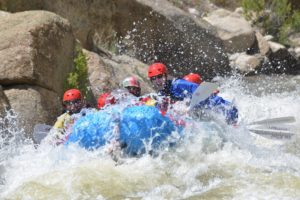 excitement and challenge.
excitement and challenge.
Class V is for experts only. This is the most challenging level for a commercially rafted trip. Class V includes lots of maneuvering, with fast consequential moves. Teamwork, communication, coordination, and strong paddling are needed to safely navigate Class V sections of whitewater. These rapids can have large drops, violent currents, and extremely steep gradients – and loads of excitement!
Class VI is extraordinarily difficult or non-runnable sections of river. Rafters face extreme imminent danger. Think cliff drops, big rocks, and scary aspects of challenge. Class VI level rapids are never run commercially, and are often walked around by rafters to avoid them.
So whatever level of challenge, splashes, and excitement you desire, Kodi Rafting can deliver. From calm float trips to expert runs to go big, give us a call to book the rafting adventure that suits your family, group, or yourself!
Call to book your whitewater adventure with us today at 877-747-RAFT or book online here. See you on the river!
Hiking the Colorado Trail? Take a Break in Buena Vista
There are many ways to enjoy The Colorado Trail, from a day hike or bike ride to a multi-day trip or end-to-end excursion beginning in either Denver or Durango.
With so many access points along the Colorado Trail, it can be hard to decide where to start, where to stop, or where to take a break.
At KODI Rafting, we think Buena Vista is a great place for all three! Roughly in the middle of the trail, Buena Vista offers an excellent basecamp, break, or exit because there's so much to do here. From soaking in one of several hot springs to grabbing a bite to eat at any of the town's top-rated restaurants, Buena Vista has it all.
Some really neat things to do in Buena Vista include but are not limited to:
- Rafting the Arkansas River through Browns Canyon National Monument
- Soaking in hot springs
- Hiking and mountain biking
- Seeing live music at one of several world-class venues
- Eating along Main Street at a delicious food truck
- Shopping stores filled with locally crafted goods
- Zip lining
- Horseback riding
- Enjoying a weekend festival like the Rapids & Grass Beer Festival or Gold Rush Days
What better way to begin your Buena Vista adventure than with KODI Rafting? Sure, we can hook you up with a stellar raft trip, but we can also arrange your mountain bike ride, your hot spring soak, or your zip line adventure.
Whether you're starting your Colorado Trail hike, ending it, or just taking a break, KODI Rafting is your source for Buena Vista adventure.
A River Rafting Road Trip
Want to create the ultimate rafting experience? How about a rafting road trip? Hit multiple rivers, all offering unique rafting experiences in the following rafting loop.
It all starts in Denver, where you’ll head 30 miles west on I-70 and stop in the historic mining town of Idaho Springs.
Idaho Springs
In Idaho Springs, you'll raft Clear Creek either on a beginner, intermediate, or advanced raft trip. You’ll hit any range of rapids from class II to class IV. You’ll flow through a rugged, spectacular mountain canyon filled with granite boulders and towering pine trees and finish up with a float through historic Idaho Springs.
From Idaho Springs, continue heading west for 40 miles on I-70 until you hit Frisco, your next rafting stop.
Frisco
Frisco offers some very special rafting trips, including the Blue River Half Day Raft Trip and the Ten Mile Creek Half Day Raft trip. Each offers excellent white water, although Blue River is an early season run as it's dependent on snowpack.
From Frisco, head into the Arkansas River Valley and hit up Buena Vista. A beautiful 60 miles south of Frisco, Buena Vista offers some of the country’s best whitewater.
Buena Vista
From Buena Vista, there are several awesome raft trips to choose from, including KODI’s most popular raft trips through Browns Canyon National Monument. By this time, you might be ready to truly test your skills. If this is the case, you might want to consider KODI’s Numbers Raft Trips. These trips take you down the Numbers, a series of rapids so intense, they were numbered instead of named.
Now that your road trip is done, you can make the easy and scenic drive back to Denver along Hwy 285. However, if you’re not ready to call it quits there’s always KODI’s Kremmling office, where you can jump on the Upper Colorado River for a scenic float and gorgeous views.
The History of Browns Canyon National Monument: Part II
Friends of Browns Canyon, a 501 (c)(3) non-profit, officially formed in 2003, with volunteers spending hundreds upon hundreds of hours in the field mapping and getting to know the area. Later that year, the 5th Congressional District’s Republican Rep. Joel Hefley had 10 areas in the district and could pick one to push forward as a wilderness.
With a Republican congressman as an ally, the Friends of Browns Canyon thought their wilderness proposal for Browns Canyon was all but passed. But the legislative process in Washington would prove to be more complicated.
The bill was drafted, introduced to Congress in November 2005, and was passed favorably to the House Committee on Natural Resources. However, this is where the bill died because the NRA opposed the closure of the Turret Trail, which maintains access for hunters.
The Friends of Browns Canyon created a board of directors for the first time in 2012 and hired their first executive director. That year, Senator Udall proposed taking a different approach by pursuing a national monument for Browns Canyon. It would designate 22,000 acres for the national monument, 10,500 of which would be wilderness.
At the end of 2013, Udall introduced the Browns Canyon National Monument and Wilderness Act of 2013 in the Senate. In mid-2014, the U.S. Senate National Parks Subcommittee held a hearing on the bill. But the bill went no further in the Senate.
Along with Sen. Michael Bennet, who co-sponsored Udall’s bill, Udall urged President Barack Obama to consider using the Antiquities Act to designate Browns Canyon a national monument, sidestepping the congressional route that had failed for the last decade to bring the project full circle.
White House officials reported Feb. 18 that the president would use the Antiquities Act to declare Browns Canyon a National Monument. And sure enough, the next day
The History of Browns Canyon National Monument: Part I
Browns Canyon National Monument provides ample year-round recreation opportunities for sportsmen and outdoor enthusiasts.
The most popular stretch of whitewater river in the country runs through Browns Canyon, where commercial rafting companies offer a variety of float trips. The monument also protects important habitat for bighorn sheep, elk, mule deer and many other wildlife species. The monument’s multi-use trail system accommodates hikers, horseback riders, and mountain bikers, while the Arkansas River in Browns Canyon is part of a 102-mile Gold Medal trout fishery.
While many of us in the Arkansas River Valley can’t imagine not having Browns Canyon National Monument outside our back door, it was a designation that was hard fought and almost didn’t happen at all.
In 1976, Congress instituted the Federal Land Management Policy Act (FLPMA), an act that directed the Bureau of Land Management to review its land for best management practices and gave the BLM direction to manage resources. FLPMA was the first initiative that said the area in the heart of Browns Canyon, which wasn’t a wilderness study area yet, had wilderness characteristics.
From the late 1970s into the 1980s, Browns Canyon was further inventoried for wilderness characteristics, and in 1980, the BLM reached the decision that 6,614 acres of Browns Canyon did qualify as a wilderness study area and purchased nearly 150 additional acres to add to the original recommendation after an intensive inventory of the area. Inventorying of Browns Canyon continued through the ’80s. A 1991 BLM Wilderness Study Report officially recommended the Browns Canyon WSA for wilderness designation.
Around this time, a handful of advocates began the hard work of turning Browns Canyon into a dedicated wilderness. These were non-paid volunteers who, for the first 10 years, operated on less than $1,000 a year. Their goal was to create a wilderness area east of the Arkansas River with the Browns Canyon Wilderness Study Area at its heart.
Continued in Part II…
KODI’s Rivers: An Overview
Arkansas River
The Arkansas River starts as a patch of melting snow in Leadville, Colorado, a city rich in mining history and famous for its 10,200-foot elevation. The Ark (as locals like to call it) gains momentum as it flows past some of the biggest mountains in Colorado, benefiting from their abundant snow melt in the spring and summer. From its headwaters, the Arkansas River deliver more than 100 miles of whitewater, making it the most popular river for rafting in the American West. The river’s appeal lies in its wide variety of trips and easy accessibility.
Blue River
The Blue River is roughly 65 miles long and is a tributary of the mighty Colorado River. Flowing from the Dillon Reservoir Dam just above the town of Silverthorne to the confluence with the Colorado River at Kremmling, the Blue River is easily a candidate for Colorado's most scenic river. Lined by cottonwood trees and crowned by the rugged Gore Mountains, the Blue River winds a scenic course through ranch land, and its public access points are popular among anglers and kayakers alike.
Clear Creek
Clear Creek is a tributary of the South Platte River that flows through Clear Creek Canyon in the Rocky Mountains directly west of Denver. It descends through a long gorge to emerge on the Colorado Eastern Plains where it joins the South Platte. Clear Creek is unusual in that it is a stream named "creek" fed by a stream named "river."
The Upper Colorado River
The Upper Colorado River Basin, defined by the river network above northern Arizona, is comprised of four states—Colorado, New Mexico, Utah, and Wyoming. These states contribute to the vast majority of the water coming into the Colorado River Basin, primarily through winter snowpack.
Colorado, specifically, is known as the Headwater State because it’s home to the headwaters of four major rivers: Platte, Arkansas, Rio Grande, and Colorado. The Colorado River flows west out of the slopes of Rocky Mountain National Park and connects to several tributaries, including the Animas, Eagle, Dolores, Yampa, Blue, and Roaring Fork Rivers.
Ten Mile Creek
Ten Mile Creek is a stream in Summit County. It rises above Copper Mountain Ski Resort and follows next to Interstate 70 for several miles before emptying into Dillon Reservoir. The creek and the paved trail that follows alongside it are easily visible from Interstate 70 between Frisco and Copper Mountain Ski Area.
Dolores River
A long and winding river in southwestern Colorado, the Dolores flows through canyons packed with enormous ponderosa pine and high sandstone cliffs in brilliant oranges and reds. The river continues its journey from the alpine scenery into the high desert and through canyons dotted with amazing white water, ancient ruins, and untamed wilderness.

